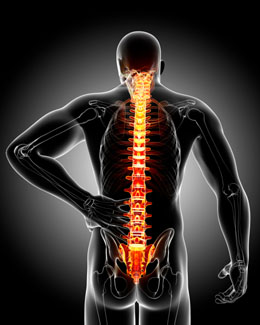It is always better to first go for non-surgical methods of treatment rather than surgical ones for the treatment of problems associated with spinal compression. Here is an article about spinal decompression exercises that can be easily performed at home.

Spinal stenosis is a medical condition in which certain areas of the spinal cord, especially, in the neck and lower back regions are affected. Stenosis causes narrowing of spinal column in these areas thereby, leading to pressure on the spinal cord. This pressure often leads to problems like herniated discs and sciatica which are characterized by back pain. Spinal decompression therapy is a non-surgical procedure that is used to treat back pain related to spinal compression. Other problems related to spinal compression are bulging discs, degenerative disc disease, pinched nerves and arm pain or leg pain. Surgical methods are also used to treat spinal compression, but, they must be considered as the last resort.
Compression of the spinal cord also affects the blood vessels present in it and restricts the supply of blood and nutrients to the surrounding area. Use of spinal decompression therapy eases the pressure on these areas thereby, clears the blockage of blood vessels and results in restoration of blood and nutrient supply. As the area regains its normal functioning, the pain related to it is also alleviated. Decompression of the spine can be achieved by exercising and using home spinal decompression machines. Let's have a look at the various exercises that help in relieving compression-related back pain.
Exercises for Spinal Decompression
Back Arch
Place an exercise mat on the floor. Lie down on your back. Relax and take a deep breath. Clasp your hands behind the knees and pull them towards your chest. Pull the knees to attain a position such that your lower back no more touches the ground. Raise your head a few inches above the exercise mat and retain this position for maximum of seven seconds. Get back to the original position and relax. Repeat this exercise 10 times everyday. This exercise routine helps in elongating the lower spine thus, relieving pain due to compression of intervertebral discs in the lumbar region.
Child's Posture
Get down on your knees on the exercise mat and bring down your head towards the mat. Stretch your arms in the front and raise the upper part of your body to get that nice stretch on the lower spine. Retain this position for 10 seconds or at the max 15 seconds and get back to your initial position. Relax for some time and repeat the exercise 10 times.
Stretch Like a Cat
This exercise provides great relief by decompressing the lumbar region of the spinal cord. To perform this exercise, get down on your knees and elbows. Lift (arch) your lower back by tightening the muscles of your abdomen. Remember to look straight to maintain the right posture while you feel the stretch. Retain the stretch around 15 seconds and get back to the initial position. Repeat this exercise 10 times everyday, for reducing the pain gradually.
Apart from these, hanging from a pull-ups bar is also a good way to correct minor spinal compression. The exercises mentioned above will be helpful only if, it is done regularly. Intermittent gaps in the exercising routine will reduce its effectiveness. Assistance is not required for performing these exercises. However, taking the help of a physiotherapist or a trainer initially, will help in learning the right method to employ.
Equipment for Spinal Decompression
Home spinal decompression machines are equipment which can be easily used at home for treating minor spinal problems. However, these should not be considered at par with proper professional decompression therapy. For individuals who do not have decompression therapy included in their insurance coverage, such equipment can be a good alternative because the treatment costs are fairly high for professional assistance. Equipment like back stretchers or inversion beds are used for treatment at home. Some machines, known as passive spinal decompression exercise machines, can be used by individuals who have problem performing conventional exercises.
The pain and stiffness caused by the compression of spinal column can significantly hamper the regular activities of a person. If treatment for such a problem is not started off immediately, it can aggravate to a serious condition which may also call for surgery. However, before beginning the exercise routine, it is important to consult a physiotherapist who is the right person for providing guidance for these exercises.


 Spinal stenosis is a medical condition in which certain areas of the spinal cord, especially, in the neck and lower back regions are affected. Stenosis causes narrowing of spinal column in these areas thereby, leading to pressure on the spinal cord. This pressure often leads to problems like herniated discs and sciatica which are characterized by back pain. Spinal decompression therapy is a non-surgical procedure that is used to treat back pain related to spinal compression. Other problems related to spinal compression are bulging discs, degenerative disc disease, pinched nerves and arm pain or leg pain. Surgical methods are also used to treat spinal compression, but, they must be considered as the last resort.
Spinal stenosis is a medical condition in which certain areas of the spinal cord, especially, in the neck and lower back regions are affected. Stenosis causes narrowing of spinal column in these areas thereby, leading to pressure on the spinal cord. This pressure often leads to problems like herniated discs and sciatica which are characterized by back pain. Spinal decompression therapy is a non-surgical procedure that is used to treat back pain related to spinal compression. Other problems related to spinal compression are bulging discs, degenerative disc disease, pinched nerves and arm pain or leg pain. Surgical methods are also used to treat spinal compression, but, they must be considered as the last resort.